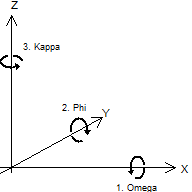

The degree of conformity with a standard, or the degree of perfection attained in a measurement. Accuracy relates to the quality of a result and is distinguished from precision which relates to the quality of the operation by which the result was obtained.
Accuracy refers to the closeness between measurements and their "true" values. The farther a measurement is from its expected or true value, the less accurate it is.
Precision pertains to the closeness to one another of a set of repeated observations of a random variable. Thus, if such observations are closely clustered together, then these observations are considered to have been obtained with high precision. A measurement that is precise is not necessarily accurate.
The "true" value is usually defined by some standard. A measured length of 1.1m of an actual length of 1.0 is accurate to 0.1m. If there are no systematic errors the accuracy usually falls within the precision of the measurement. The term accuracy is often incorrectly used interchangeably with the terms repeatability, resolution and precision. See the precision definition for an example.
Statements of accuracy need to be tied to statements of probability. If someone is stating how accurate a measurement is they should also be stating to what probability it is that accurate. Some background might clarify the relation of probability to accuracy.
Imagine that we have measured the length of an object. We measure this object repeatedly using the same instrument and record all the measurements. We then plot the number of times we obtained a certain measurement. We would normally get a graph something like this:

Most of the measurements were around 100.20m. We did get some measurements up near 100.22m and some down near 100.18m. We were measuring this length with a device that was calibrated to a known international standard. Relative to the standard we can say the most probable measurement for that length is 100.20m. When we state the accuracy of the measurement we can say that to 95% probability the accuracy is 0.02m (or 2cm).
The curve shown above is called a normal or Gaussian distribution and most accuracy curves look like this unless there are problems with the measurement technique.
This accuracy can also be stated with respect to one of the parameters of the normal distribution curve called the standard deviation. There is a 68% probability that the 'true' measurement lies within one standard deviation of the stated value and there is a 95% probability that the 'true' measurement lies within two standard deviations of the stated value. The graph above shows lines at 100.18m and 100.22m which are approximately at the two standard deviation marks. This measurement then might also be stated as: 100.20m 0.02m at two standard deviations.
When the accuracy is not stated with a probability, then it is common to assume a 95% probability. That is, it is assumed that the 'true' value lies within the stated error range with a 95% probability. Unfortunately you cannot always assume this fact since it is easy to make a measurement appear more accurate by stating it at 50% (called probable error) or at 68% (called mean error) probability levels. When reading accuracy figures it is "reader beware"!
For example, a length measurement might be stated as 12.34m 0.01m. The author of this figure has not stated a probability. It would be incorrect to assume that the 'true' value is between 12.33m and 12.35m with 100% certainty. The following table shows how the 95% probability level error (which is an accepted international standard for stating accuracy) changes with different assumptions on the measurement taker's part:
|
Probability Level Actually Used but Not Stated |
Stated Error |
Actual Error at 95% Probability |
|
50% (Probable Error) |
0.01 m |
0.03 m |
|
68% (Mean Error) |
0.01 m |
0.02 m |
|
95% (Standard Error) |
0.01 m |
0.01 m |
The accuracy of a complete Measurement Project or a set of measurements usually refers to the worst measurement in the set but can sometimes refer to the average or root mean square (RMS). Surveying standards are always based on the worst measurement in the set. For example, a survey done to 1:5,000 means that the worst measurement in the set is accurate to one part in 5,000 of the largest dimension in the set.
For other discussions on accuracy and how to improve it in PhotoModeler see the Accuracy and Overcoming Limitations section.